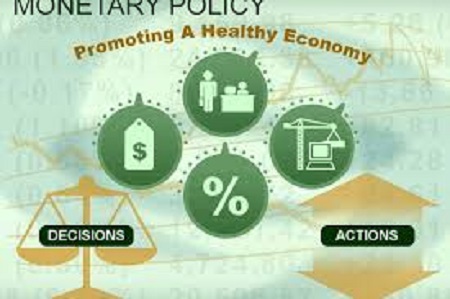The MPC is set to have its meeting on the 21st and 22nd of May, 2018. As with all meetings since July 2016, the analysts expect the committee to maintain status quo on all policy rates.
“We expect emphasis to be placed on the need to withstand a possible pass through inflation from rising global inflation as well as protect the economy and financial markets against rising downside risk of capital flow reversals,” analysts from Afrinvest (West) Africa Limited stated in a note to clients on Friday.
They further think the decision to converge Monetary Policy Rate (MPR) with market interest rates should be delayed due to the ongoing capital flow reversal and asset prices volatility in emerging and frontier markets (including Nigeria) which is a downside risk to what has come to be the central bank’s prime policy anchor – Exchange Rate stability.
According to Afrinvest, the current capital flow reversal has been the strongest test for liquidity in the Investors’ and Exporters’ Window (I&E Window) so far; a test it is yet to pass with flying colors.
The Central Bank of Nigeria(CBN) has responded to the volatility in the Fixed Income market and increased demand for foreign exchange (FX) by tightening liquidity in the money market in the past two week.
“We believe the odds of the MPC slashing the MPR in the same period it is aggressively sterilising liquidity is slim; hence we expect the CBN to maintain status quo on all rates. “Regardless, as we have argued in previous notes, an MPR cut (either at this week’s sitting or subsequent ones) will have little impact on fixed income yields as the CBN has already set in motion the easing cycle by deliberately guiding market rates downwards in the last three quarters, in addition to knock-on effects of the FGN fiscal strategy to reduce domestic debt issuance,” the analysts said.
However, FSDH Research team in their own assessment believe that recent developments in the Nigerian economy and the short-term outlook of the economy favour monetary policy easing, which is required to stimulate economic growth and credit creation.
“We believe this easing may come in the form of an adjustment to the Monetary Policy Rate (MPR) or an adjustment to the Cash Reserve Requirement (CRR),” the analysts said.
At its meeting in April 2018, the MPC maintained the MPR at 14per cent with the asymmetric corridor at +200 and -500 basis points around the MPR, and retained the Cash Reserve Requirements (CRR) and Liquidity Ratio (LR) at 22.50per cent and 30per cent respectively.
The International Monetary Fund (IMF), projects a global growth rate of 3.9 per cent for 2018, higher than 3.8 per cent recorded in 2017.
It added that the emerging market and developing economies growth should strengthen in the medium-term.
To this effect, FSDH Research believes the global growth should sustain high crude oil prices, thereby giving support to interest rate cuts.
Furthermore, the monetary policy stance of the CBN is predicated on achieving price stability in domestic prices and foreign exchange rate. The objective has been responsible for the tight monetary policy stance so far. FSDH Research considers the Nigerian economy has recorded a reasonable level of price stablity that should encourage the MPC to now concentrate on growth in the economy.
“We observe that there has not been any linkage between the MPR and the yields on fixed income securities since July 2016, as the MPR has remained at 14per cent. We also note that certain lending rates in the economy are predicated on the MPR. Therefore, in order to boost credit creation and stimulate economic growth, monetary policy easing would be appropriate,” says FSDH investment Research team.
Other analysts are expectant of CBN’s interest rate cut for the first time in two years.
The bank on several occasions has made clear that 12per cent inflation will serve both as guidance and a pre-condition for a haircut to monetary policy rate (MPR).
Nigeria’s inflation for April, decreased to 12.48 per cent (year-on-year) from 13.38 per cent recorded in March.
According to them, expectations are high for a cut in the central bank’s key interest rate as lowering the rate could increase domestic production and stimulate economic growth in the country. The inflation rate has taken a downward trend, decreasing to 12.48 percent in April and 0.86 percent points less than the rate recorded in March 2018, which was 13.34 percent.






